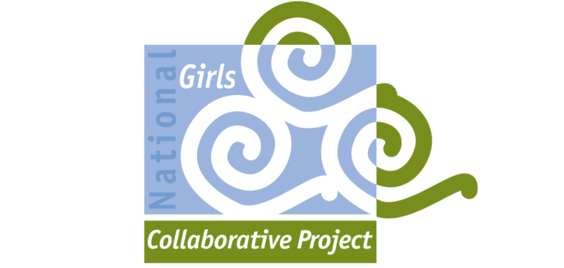Industries that don't prioritize diversity and inclusion are at a distinct disadvantage. Diversity in any group makes it stronger and more resilient. Not only is it the right thing to do, encouraging greater diversity in the workforce promotes better innovation, better decision-making, lower turnover, and faster problem-solving.
Science, technology, engineering, and math (STEM) fields are chronically lacking in diversity, but individuals and organizations are working for equal representation in STEM all over the world. We wanted to highlight a few of them paving the way for better inclusion. This series of interviews features individuals and organizations working to bring underrepresented groups into STEM fields, and to build and sustain supportive environments that don't push people out.

The National Girls Collaborative Project (NGCP) brings together organizations that are committed to informing and encouraging girls to pursue STEM careers. Its goals include maximizing access to resources for projects that span organizations, strengthening projects by serving as a resource for best practices and research, and using the power of networking across programs to create the tipping point for gender equity in STEM.
We asked the founder and CEO of NGCP, Karen Peterson, a few questions via email to learn more about NGCP and the work it does.
International Society of Automation: Why did you start the National Girls Collaborative Project? As you’ve watched it grow and change, what are you most proud of?
Karen Peterson: The NGCP began because we identified a need to create a community of girl-serving STEM programs and connect them to the champions in other community-based organizations, corporations, higher education, and professional organizations. We created a model in the Pacific Northwest, and as we presented our model, we received National Science Foundation funding to expand across the United States. Now, NGCP has a unique position as a convening organization bringing together a diversity of individuals, programs, and organizations interested in engaging girls in STEM to connect and collaborate. NGCP has a strong reputation as a key partner and is a preeminent resource and advocate for gender equity in STEM.
During our last external evaluation, a summative analysis of the evaluation data show that NGCP was highly effective in a number of areas:
- NGCP has increased participants’ knowledge of existing programs and resources, [and] increased interest in collaboration as well as knowledge of how to collaborate effectively. NGCP has affected knowledge of exemplary practices related to serving girls and girls from underrepresented groups in STEM. In each of these areas, there was significant levels of change between ratings “before NGCP” and “current” levels.
- The increase in collaboration and dissemination of exemplary practices affected programs by helping them better serve girls in STEM. NGCP participants were more effectively increasing girls’ interest, attitudes, and confidence in STEM. In addition, NGCP participants indicated their programs were more effective, had more STEM content as a result of NGCP, and felt less organizational isolation.
In summary, NGCP has led to improvements in programs serving girls in STEM by increasing collaboration and supporting the use of exemplary practices. The resulting outcomes to programs should, eventually, attract and retain more girls in STEM educational and career pathways.
ISA: Does NGCP have any involvement in projects related to IoT/IIoT, robotics, smart manufacturing, and/or industrial cybersecurity? If so, could you share about your role in those projects?
KP: Yes! We are involved in two National Science Foundation grants with a focus on increasing interest in digital forensics, cybersecurity, and another one focused on engaging girls in aviation-related manufacturing and technology. We are often invited to partner with subject matter experts, adding a gender lens, designing professional development for educators, and leading the outreach efforts, leveraging our large network.
ISA: How does more gender diversity in tech fields make tech better? What is NCGP doing to work toward this?
KP: Greater diversity in tech fields is central to ensuring the inclusion of a multitude of perspectives, capacities, and approaches to problem-solving in critical, change-making sectors. Fostering greater diversity in tech also works to dismantle power structures, such as gendered socialization practices, stereotypes, and norms, which often hinder women’s access to tech sectors. NGCP has always been focused on equity, beginning with a focus on girls and women and expanding to include other underrepresented groups, Black, Latinx, and Native American girls in STEM and Latinx youth and youth with disabilities in computer science.
NGCP strives to foster gender diversity in tech fields through our collaboration model, expanding and strengthening STEM-related opportunities and impact for girls and women. The NGCP model creates a network of practitioners and organizations, community-based organizations, K-12 and higher education, researchers, and government, facilitating collaboration, delivering high-quality professional development, and disseminating robust, research-based resources and curriculum. These mechanisms empower educators to better engage and more effectively serve girls to increase girls’ interest, confidence, and agency in tech. This shifts the conversation and landscape on a local, state, and national level. Girls, women, and their organizations gain confidence and power to break down stereotypes about what tech fields are and who works in tech. In total, girls, women, and organizations are well-equipped to continue the dismantling of structural oppression historically present in tech workplaces and occupations.
ISA: The demographics of industrial and systems engineering are very homogenous. As more women enter and stay in engineering fields, how do think these fields will evolve?
KP: These fields will benefit from new and diverse perspectives, experiences, and skill sets from the inclusion of intersectional identities. As more women, notably women of underrepresented racial and ethnic groups, enter engineering fields, these women will be in positions to be innovative problem-solvers and change-makers in public and private sectors. Moreover, these women engineers will be in the position to be role models to girls, inspiring and sparking girls’ interest in engineering. Girl-centered programming that connects girls to role models enables girls to see themselves as engineers, helping to demonstrate how stereotypically male-dominated fields are meant for women. With increased diversity in engineering, and through programming which connects women professionals to girls, girls will more confidently choose a career in engineering and reshape the landscape of the field.
A previous article in this series featured the organization Blacks in Technology and their work to increase the representation and participation of Black people in tech. Find out more here.
Interested in reading more articles like this? Subscribe to ISA Interchange and receive weekly emails with links to our latest interviews, news, thought leadership, tips, and more from the automation industry.




